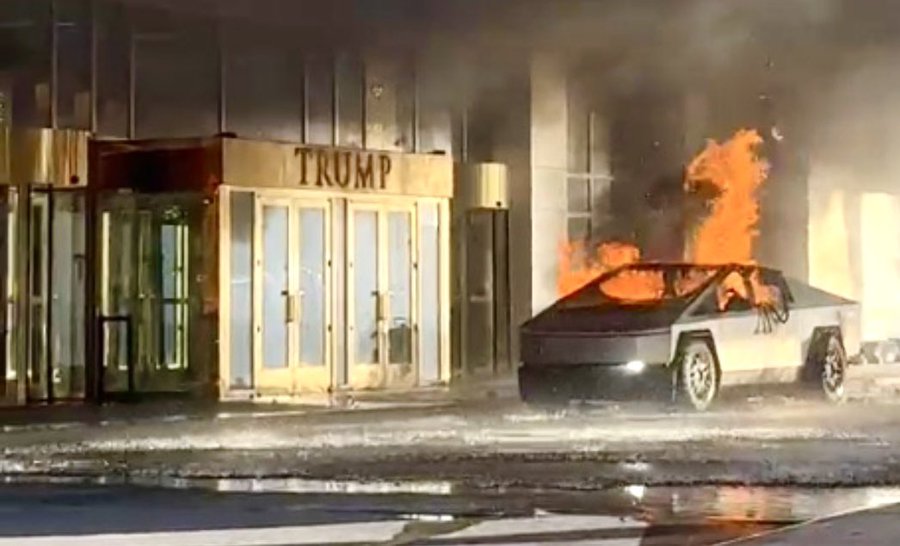The Wrap
Tesla’s Deadly Trump Tower Cybertruck Explosion in Vegas Mocked as ‘Perfect Metaphor’ for 2025
Benjamin Lindsay – January 1, 2025

Chaos erupted outside Trump International Hotel in Las Vegas on Wednesday after a Cybertruck, Tesla’s popular-but-maligned electric pickup truck model, exploded into flames. The New Year’s Day event killed one and injured an additional seven, according to authorities.
CEO Elon Musk responded Wednesday on X, writing that after the “whole Tesla senior team” investigated the matter, they’d “confirmed that the explosion was caused by very large fireworks and/or a bomb carried in the bed of the rented Cybertruck and is unrelated to the vehicle itself.”
“All vehicle telemetry was positive at the time of the explosion,” he said.
And while there’s apparent reason for concern over the event, the tragedy also garnered a fair amount of ridicule and mockery on X, the social media platform Musk owns.
Many users expressed that it’s a “perfect metaphor” for what’s in store for 2025 under President-elect Donald Trump and Musk leading his DOGE advisory board.
“A real photo and perfect metaphor heading into 2025,” MeidasTouch News editor-in-chief Ron Filipkowski wrote.

“Have you seen the footage? Looks like it deliberately blown up,” responded another. “If it was, you’re probably spot on, just not in the way you thought.”
In a Wednesday morning press conference, Sheriff Kevin McMahill of the Las Vegas Metropolitan Police Department shared that the police were informed of an apparent explosion at 8:40 a.m. local time, detailing that at the time of the event, a 2024 Tesla Cybertruck “pulled up to the last entrance doors of the hotel” before exploding, killing one person inside.
“We saw that smoke started showing from the vehicle, and then a large explosion from the truck occurs,” McMahill said.
McMahill additionally drew comparison’s to Wednesday morning’s vehicular terrorist attack in New Orleans, saying that investigators are “very well aware of what has happened” there.
“As you can imagine, with an explosion here on an iconic Las Vegas Boulevard, we are taking all of the precautions that we need to take to keep our community safe,” he said. Police had also determined at that time that there did not appear to be any additional public safety threats.
“Earlier today, a reported electric vehicle fire occurred in the porte cochère of Trump Las Vegas,” Eric Trump, a Trump Organization leader and the President-elect’s son, wrote on X, a message later echoed by the hotel’s official account. “The safety and well-being of our guests and staff remain our top priority.”
And while the news circulated into Wednesday afternoon as more detail emerged of the cause and nature of the explosion — along with surveillance video that appears to the vehicle exploding (watch that below) — many took to social media to confess that no matter the cause, the optics of Trump- and Musk-world literally burning didn’t bode well for the upcoming presidency.
A Tesla Cybertruck in flames in front of Trump Tower Vegas?
Melanie D’Arrigo: If you were going to choose a metaphor for our current state of politics, a Tesla Cybertruck exploding and burning in front of a Trump Tower in a city where millions of Americans go each year to lose their money, is pretty spot on.
You couldn’t script a better metaphor.
A fire-prone status symbol of excess parked outside the shrine to grift and failed promises—it’s almost poetic.






